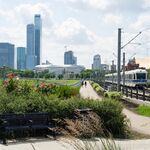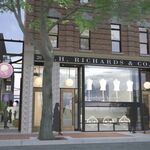Since this is the "LRT Expansion Planning" thread, I really recommend people go look in detail at a system like the Frankfurt U-Bahn, I will have a video on it soonish, but it uses the exact same standards and compatible vehicles to both Edmonton and Calgary (including the U2 back in the day), but the design of the network and infrastructure is totally different (they have 3 subway tunnels downtown criss crossing).
The things I would suggest are worth thinking about:
- Network Topology
- Grade Separation and ROW design (in Frankfurt you are typically grade separated unless you are on a branch which become increasingly tram like as service frequency goes down)
- Infrastructure Design
- The fact that Frankfurt has both an U-Bahn (Similar to the traditional high floor LRT in Edmonton - a Subway style system), Trams (Similar to the Valley Line, but also lots to learn here), and of course lots of regional and suburban trains
A good example of where a lot of learning could happen is looking at the U5-25 and U5-KR trains, which allow Frankfurt to connect up multiple LRVs (think the trains on the Capital and Metro Line) into longer walkthrough trains (like you will see in Toronto, Vancouver, and Montreal), there isn't a good reason Edmonton shouldn't try to go for a design like this for future vehicles (its also a good reminder that the idea that high floor LRT vehicles are no longer built or obsolete is ridiculous):
View attachment 558147
View attachment 558148
View attachment 558149
Here's a map of the system:
View attachment 558144




